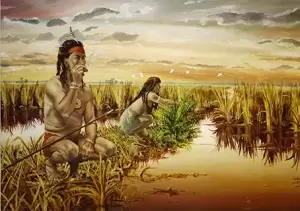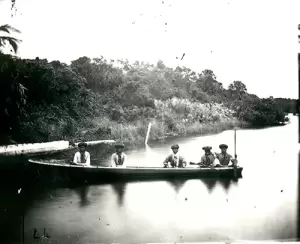Early Tribes: Tequesta
The Tequesta or Tekesta Indians lived in present-day southern Palm Beach, Broward, and Miami-Dade counties. They were second in power and prominence among the small tribes of Florida’s southeast coast. To the north were the Jeaga and Jobe, and to the west and southwest were the dominant Calusa. According to historians of the early 20th century, the chief of the Tequesta was related to the chief of the Calusa. The first record of European contact with the Tequesta was in 1513, by Juan Ponce de León when he discovered the Florida coast.
The Tequesta were hunter-gatherers who lived in villages, although they may have lived in the open the greater part of the year, as Bishop Diaz Vara Calderon in 1675 wrote that the tribes in south Florida “had no fixed abodes.” What huts they did have were probably covered with palmetto thatch. Their villages were typically marked by a kitchen midden, the accumulation of refuse such as shell, bones, ashes, and broken pottery. These middens were always accessible by water and usually located on a river, near its mouth, or on a cay (a small, low island formed from mostly coral or sand, more often called “key” in Florida). The Tequesta searched for their food (deer, fish, alligator, turtles, shellfish, plants, and roots) in dugout canoes and sometimes traveled great distances to find a manatee or other large marine animal.
Like other south Florida Indians, the Tequesta wore very little clothing, just breechcloths (loincloths), perhaps made of palmetto, for the men, and skirts of Spanish moss for the women. One of the last written references to the Tequesta was from Father Monaco in 1743, who said they were suffering from the continued attacks of the Yuchi, a large tribe that had lived from Illinois to Florida among many other peoples, but struggled for a home and identity after the arrival of Europeans upset their alliances.



